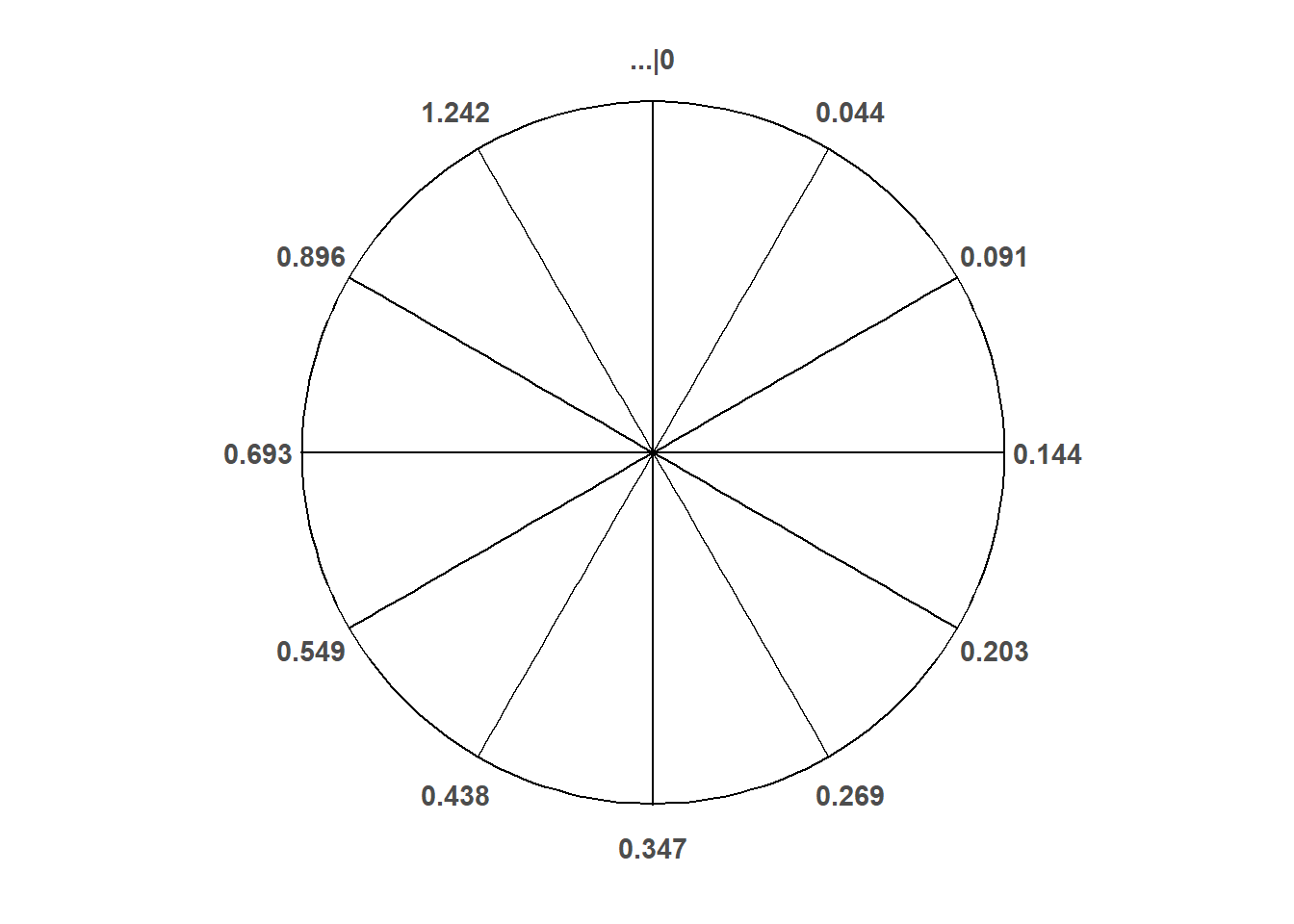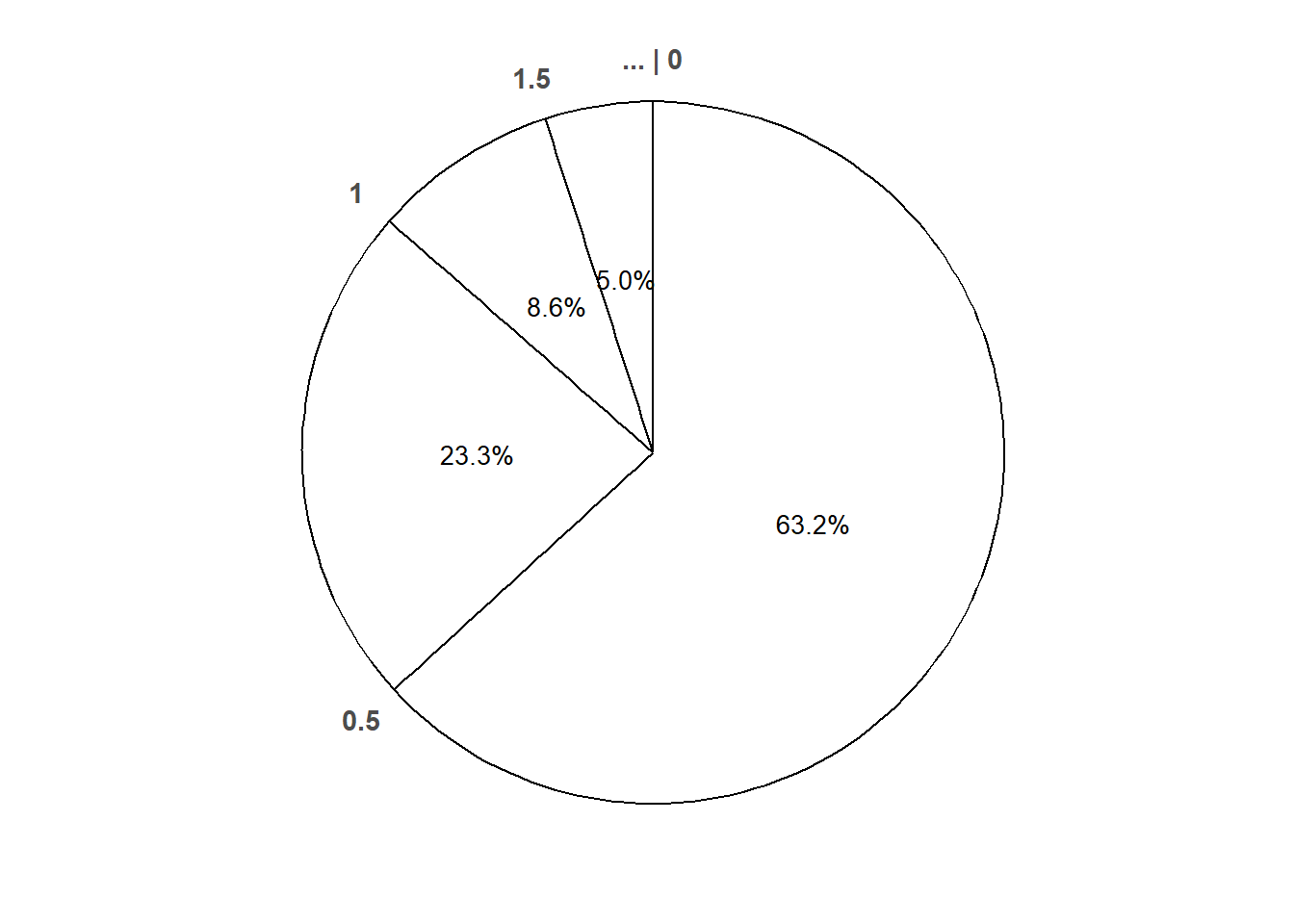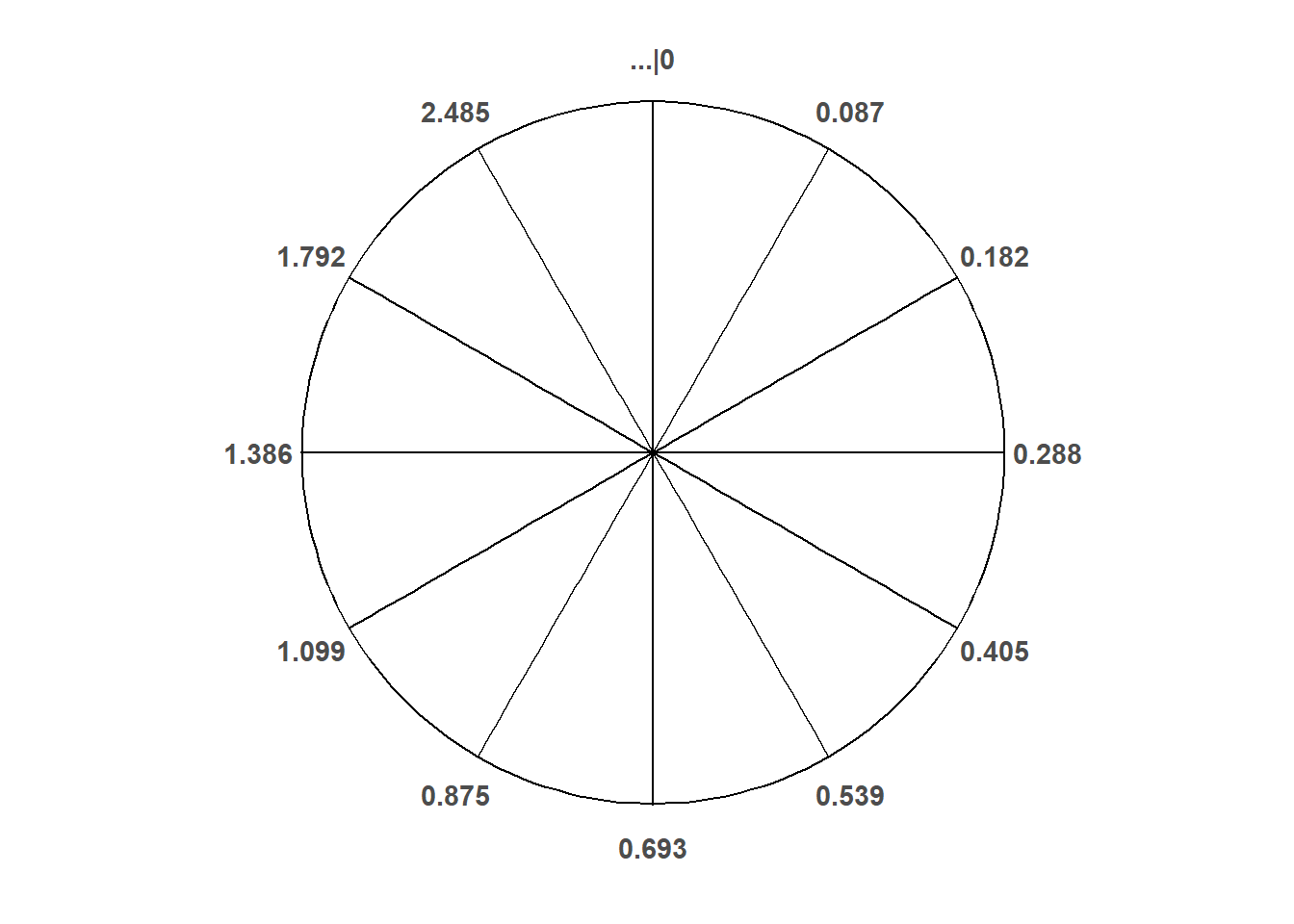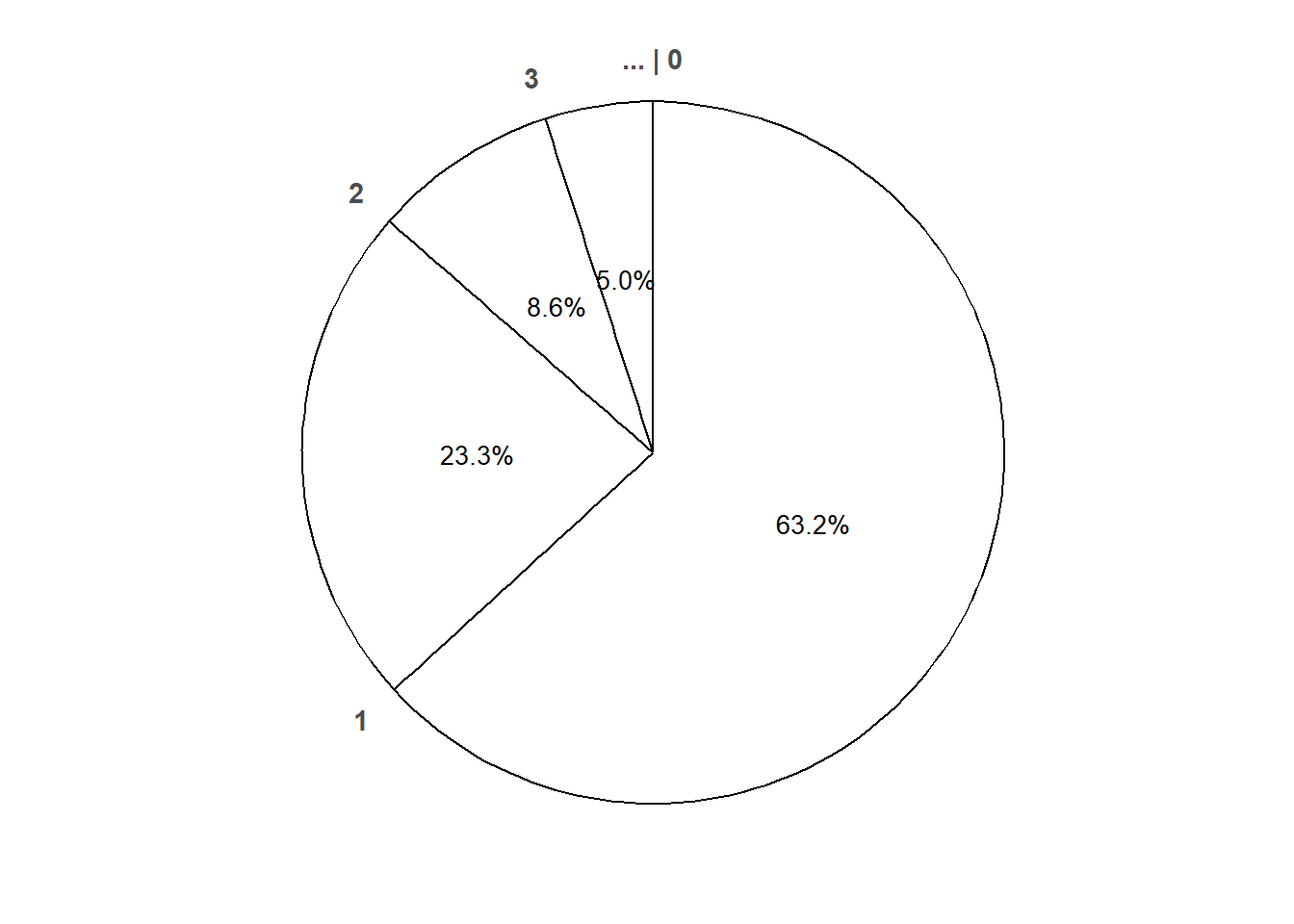15 Continuous Random Variables: Probability Density Functions
- The continuous analog of a probability mass function (pmf) is a probability density function (pdf).
- However, while pmfs and pdfs play analogous roles, they are different in one fundamental way; namely, a pmf outputs probabilities directly, while a pdf does not.
- A pdf of a continuous random variable must be integrated to find probabilities of related events.
- The probability density function (pdf) (a.k.a. density) of a continuous RV \(X\), defined on a probability space with probability measure \(\text{P}\), is a function \(f_X:\mathbb{R}\mapsto[0,\infty)\) which satisfies \[\begin{align*} \text{P}(a \le X \le b) & =\int_a^b f_X(x) dx, \qquad \text{for all } -\infty \le a \le b \le \infty \end{align*}\]
- For a continuous random variable \(X\) with pdf \(f_X\), the probability that \(X\) takes a value in the interval \([a, b]\) is the area under the pdf over the region \([a,b]\).
- The axioms of probability imply that a valid pdf must satisfy \[\begin{align*} f_X(x) & \ge 0 \qquad \text{for all } x,\\ \int_{-\infty}^\infty f_X(x) dx & = 1 \end{align*}\]
Example 15.1 Two resistors are randomly selected and connected in series, so that the system resistance \(X\) (ohms) is the sum of the two resistances. Assume that the first resistor has a marginal Uniform(135, 165) distribution, and the second has a marginal Uniform(162, 198) distribution (corresponding to nominal 150 and 180 ohm resistors with 10% tolerance). Also assume that the two resistances are independent.
Simulation suggests that the pdf of \(X\) is
\[ f_X(x) = \begin{cases} \frac{1}{33}\left(1-\frac{1}{33}|x - 330|\right), & 297 < x < 363\\ 0, & \text{otherwise.} \end{cases} \]
Sketch a plot of the pdf. What does this say about the distribution of the system resistance?
Verify that \(f_X\) is a valid pdf.
Find \(\text{P}(X > 340)\).
Find \(\text{P}(330 < X< 340)\).
15.1 Density is not probability
Example 15.2 Continuing Example 15.1, where the series system resistance \(X\) (ohms) has pdf \[ f_X(x) = \begin{cases} \frac{1}{33}\left(1-\frac{1}{33}|x - 330|\right), & 297 < x < 363\\ 0, & \text{otherwise.} \end{cases} \]
Compute \(\text{P}(X = 340)\).
Compute the probability that \(X\), rounded to one decimal place, is 340.0.
How is the probability in the previous part related to \(f_X(340)\)?
How many times more likely is \(X\), rounded to one decimal place, to be 340.0 than to be 350.0?
- The probability that a continuous random variable \(X\) equals any particular value is 0. That is, if \(X\) is continuous then \(\text{P}(X=x)=0\) for all \(x\).
- For a continuous random variable \(X\), \(\text{P}(X \le x) = \text{P}(X < x)\), etc.
- Careful: this is NOT true for discrete random variables; for a discrete random variable \(\text{P}(X \le x) = \text{P}(X < x) + \text{P}(X = x)\).
- For continuous random variables, it doesn’t really make sense to talk about the probability that the random value is equal to a particular value. However, we can consider the probability that a random variable is close to a particular value.
- The density \(f_X(x)\) at value \(x\) is not a probability.
- Rather, the density \(f_X(x)\) at value \(x\) is related to the probability that the RV \(X\) takes a value “close to \(x\)” in the following sense \[ \text{P}\left(x-\frac{\epsilon}{2} \le X \le x+\frac{\epsilon}{2}\right) \approx \epsilon f_X(x), \qquad \text{for small $\epsilon$} \]
- The quantity \(\epsilon\) is a small number that represents the desired degree of precision. For example, rounding to two decimal places corresponds to \(\epsilon=0.01\).
- What’s important about a pdf is relative heights. For example, if \(f_X(x_2)/ f_X(x_1) = 2\) then \(X\) is roughly “twice as likely to be near \(x_2\) than to be near \(x_1\)” in the above sense. \[ \frac{f_X(x_2)}{f_X(x_1)} = \frac{\epsilon f_X(x_2)}{\epsilon f_X(x_1)} \approx \frac{\text{P}\left(x_2-\frac{\epsilon}{2} \le X \le x_2+\frac{\epsilon}{2}\right)}{\text{P}\left(x_1-\frac{\epsilon}{2} \le X \le x_1+\frac{\epsilon}{2}\right)} \]
15.2 Exponential distributions
Example 15.3 Suppose that we model the waiting time, measured continuously in hours, from now until the next earthquake (of any magnitude) occurs in southern CA as a continuous random variable \(X\) with pdf \[ f_X(x) = 2 e^{-2x}, \; x \ge0. \] This is the pdf of the “Exponential(2)” distribution.
Sketch the pdf of \(X\). What does this tell you about waiting times?
Compute \(\text{P}(X = 0.5)\).
Without doing any integration, approximate the probability that \(X\) rounded to the nearest minute is 0.5 hours.
Without doing any integration determine how much more likely is it for \(X\) rounded to the nearest minute to be 0.5 than 1.5.
Compute and interpret \(\text{P}(X > 0.25)\).
Compute and interpret \(\text{P}(X \le 3)\).
Compute and interpret the 25th percentile of \(X\).
Compute and interpret the 50th percentile of \(X\).
Compute and interpret the 75th percentile of \(X\).
Start to construct a spinner corresponding to this Exponential(2) distribution.
Use simulation to approximate the long run average value of \(X\). Interpret this value. At what rate do earthquakes tend to occur?
Use simulation to approximate the standard deviation of \(X\). What do you notice?


- Exponential distributions are often used to model the waiting times between events in a random process that occurs continuously over time.
- A continuous random variable \(X\) has an Exponential distribution with rate parameter \(\lambda>0\) if its pdf is \[ f_X(x) = \begin{cases}\lambda e^{-\lambda x}, & x \ge 0,\\ 0, & \text{otherwise} \end{cases} \]
- If \(X\) has an Exponential(\(\lambda\)) distribution then \[\begin{align*} \text{P}(X>x) & = e^{-\lambda x}, \quad x\ge 0\\ \text{Long run average of $X$} & = \frac{1}{\lambda}\\ \text{Standard deviation of $X$} & = \frac{1}{\lambda} \end{align*}\]
- Exponential distributions are often used to model the waiting time in a random process until some event occurs.
- \(\lambda\) is the average rate at which events occur over time (e.g., 2 per hour)
- \(1/\lambda\) is the mean time between events (e.g., 1/2 hour)
- The “standard” Exponential distribution is the Exponential(1) distribution, with rate parameter 1 and mean 1.
- If \(X\) has an Exponential(1) distribution and \(\lambda>0\) is a constant then \(X/\lambda\) has an Exponential(\(\lambda\)) distribution.


15.3 Uniform distributions
- A continuous random variable \(X\) has a Uniform distribution with parameters \(a\) and \(b\), with \(a<b\), if its probability density function \(f_X\) satisfies \[\begin{align*} f_X(x) & \propto \text{constant}, \quad & & a<x<b\\ & = \frac{1}{b-a}, \quad & & a<x<b. \end{align*}\]
- If \(X\) has a Uniform(\(a\), \(b\)) distribution then \[\begin{align*} \text{Long run average value of $X$} & = \frac{a+b}{2}\\ \text{Variance of $X$} & = \frac{|b-a|^2}{12}\\ \text{SD of $X$} & = \frac{|b-a|}{\sqrt{12}} \end{align*}\]
- The “standard” Uniform distribution is the Uniform(0, 1) distribution.
- If \(U\) has a Uniform(0, 1) distribution then \(X = a + (b-a)U\) has a Uniform(\(a\), \(b\)) distribution.